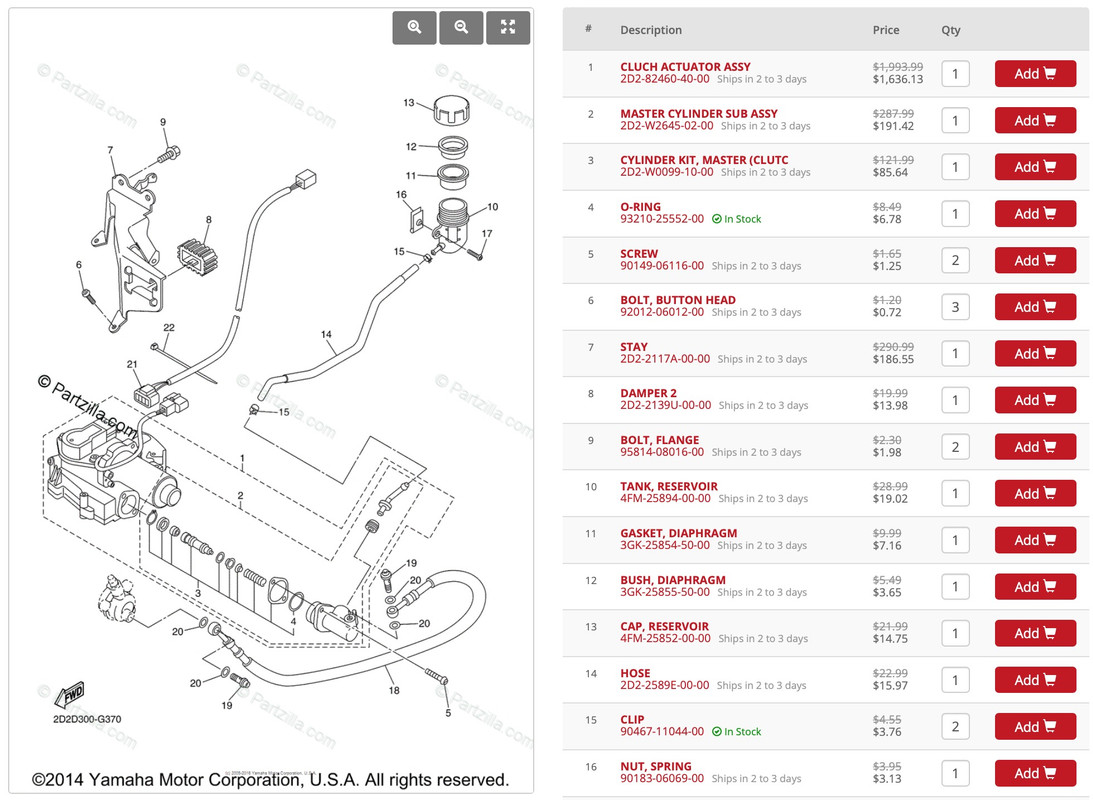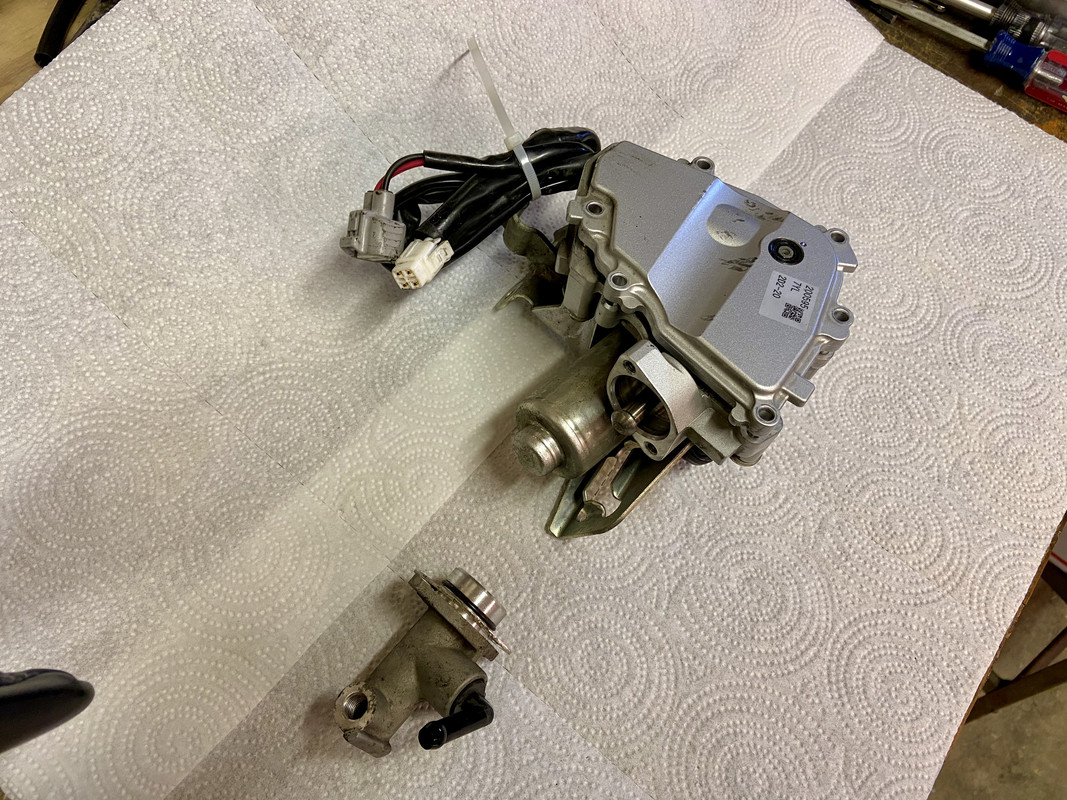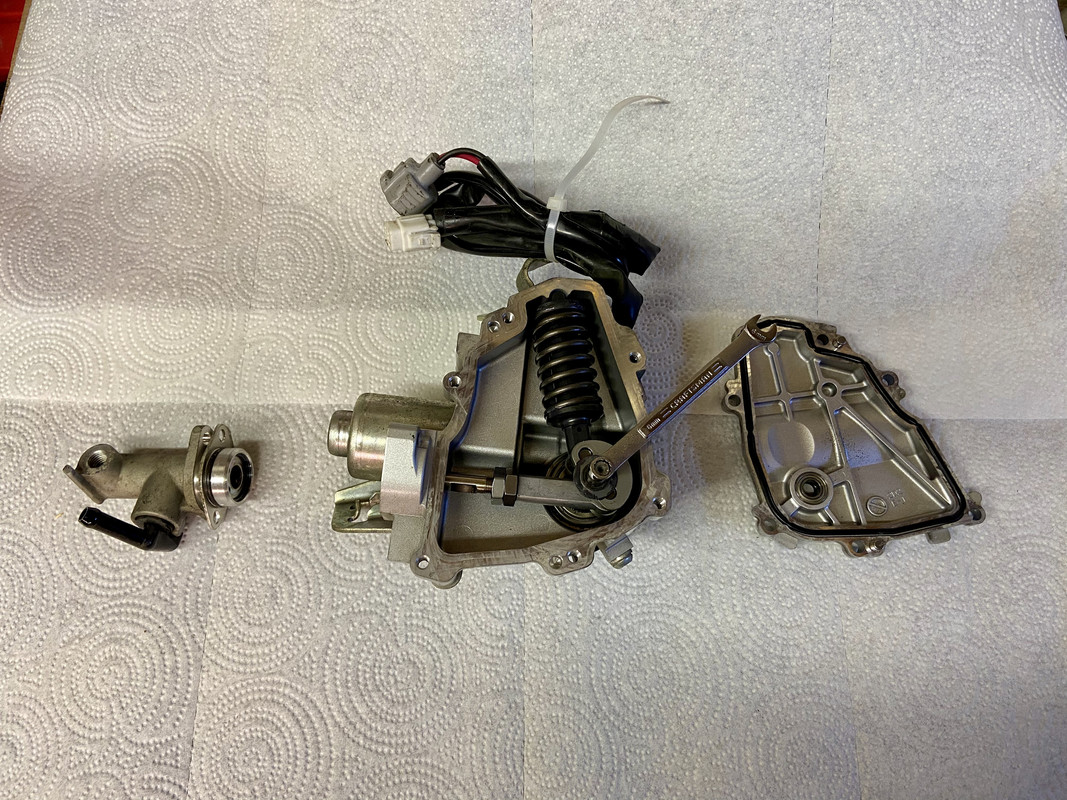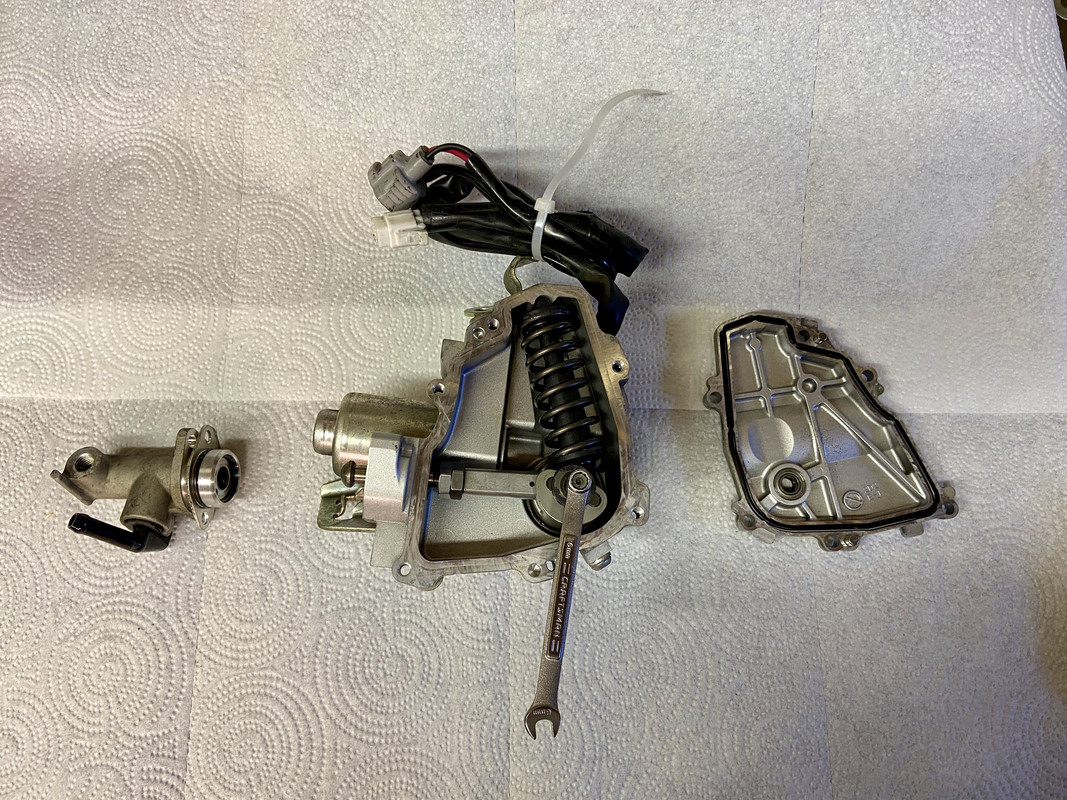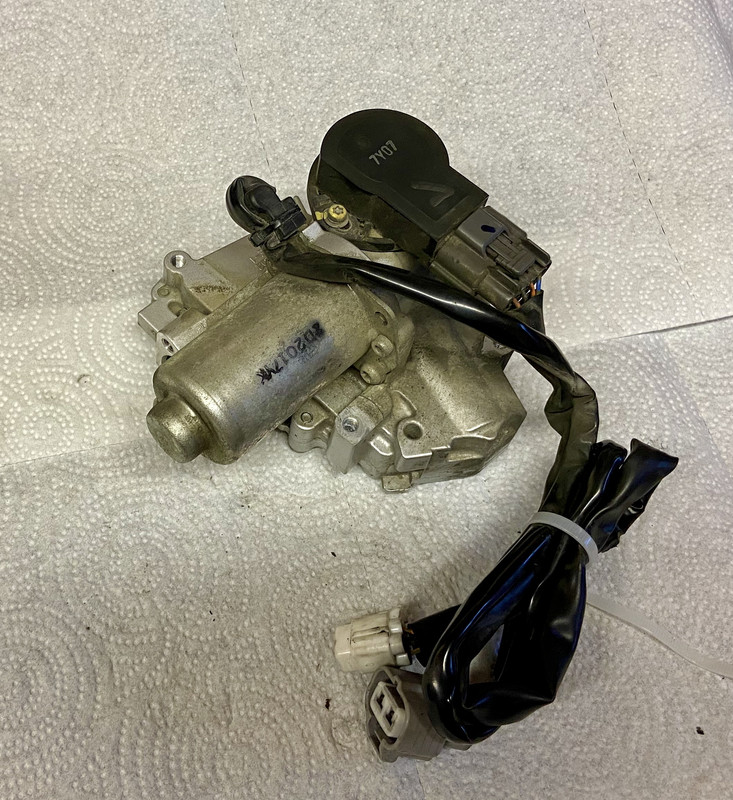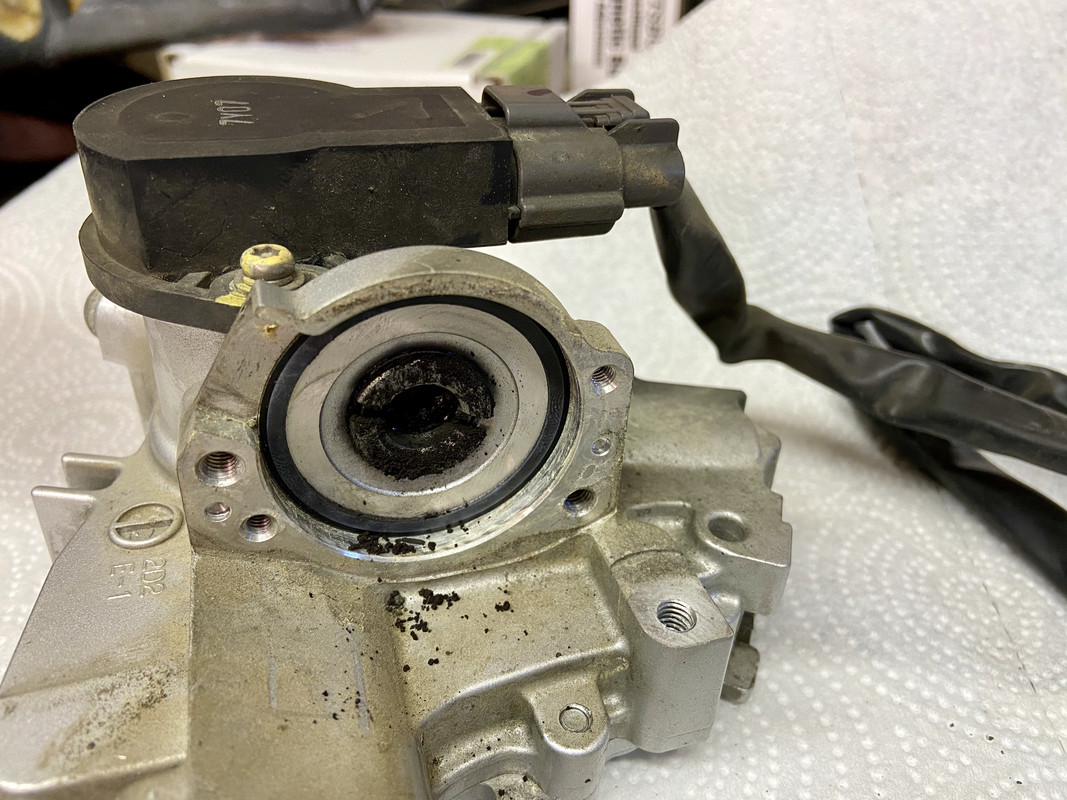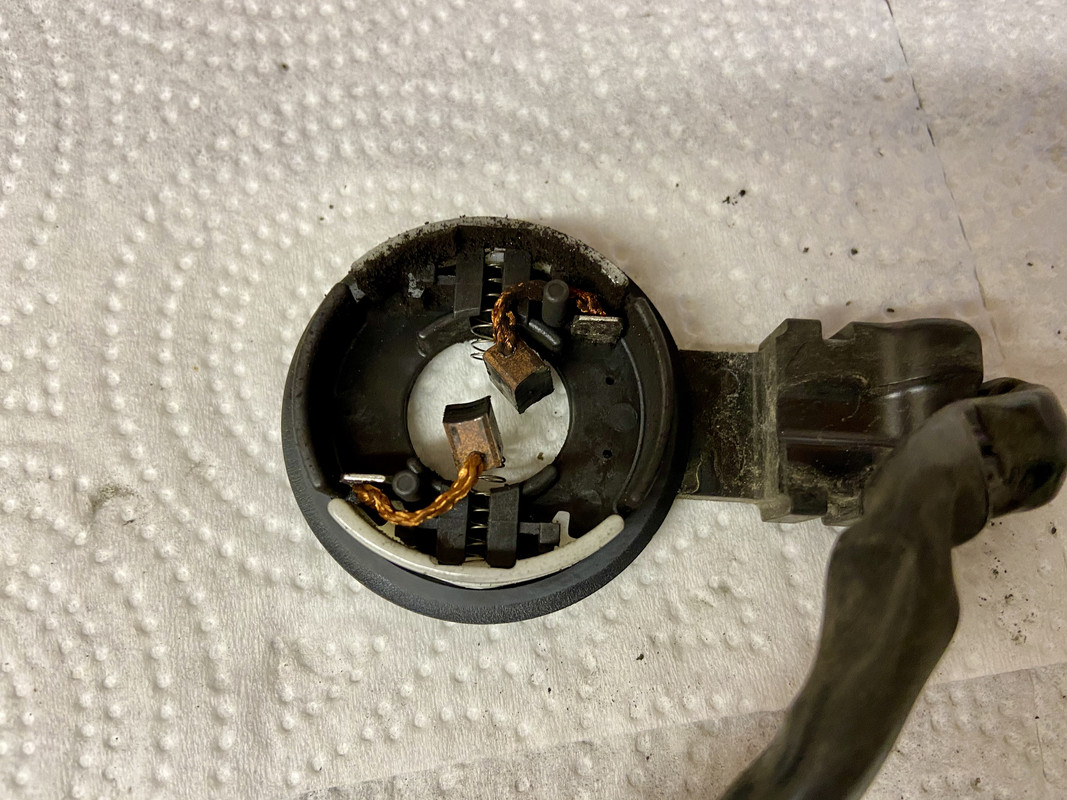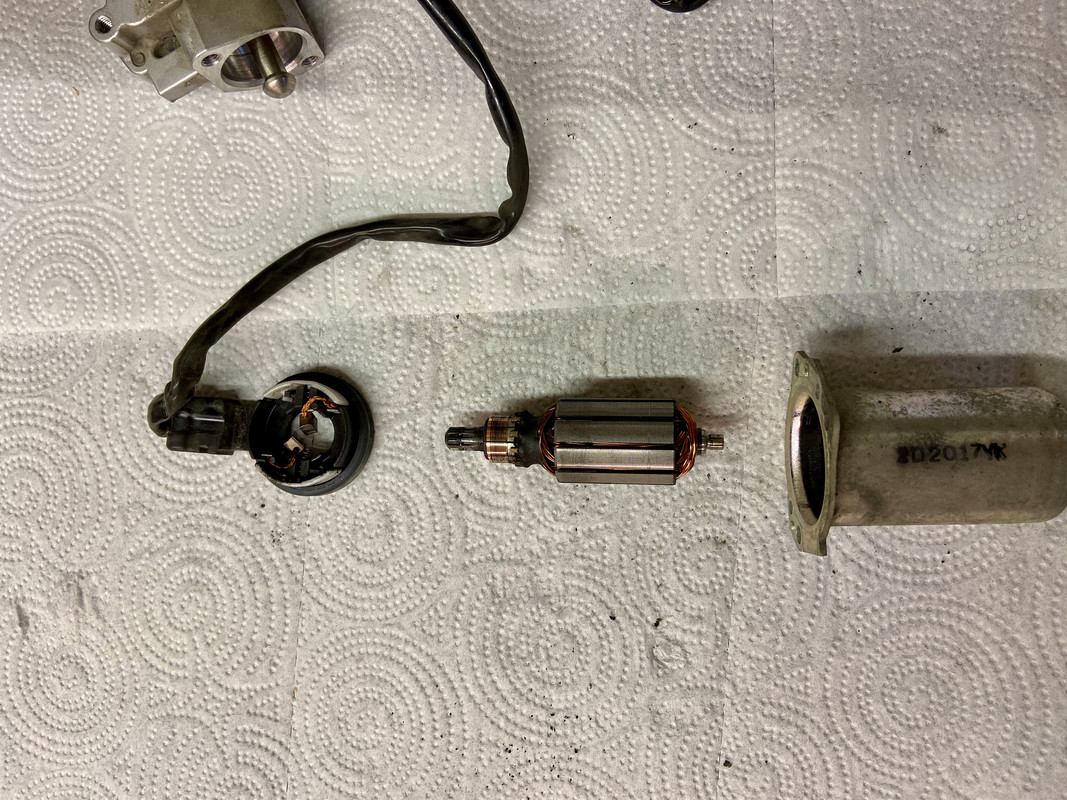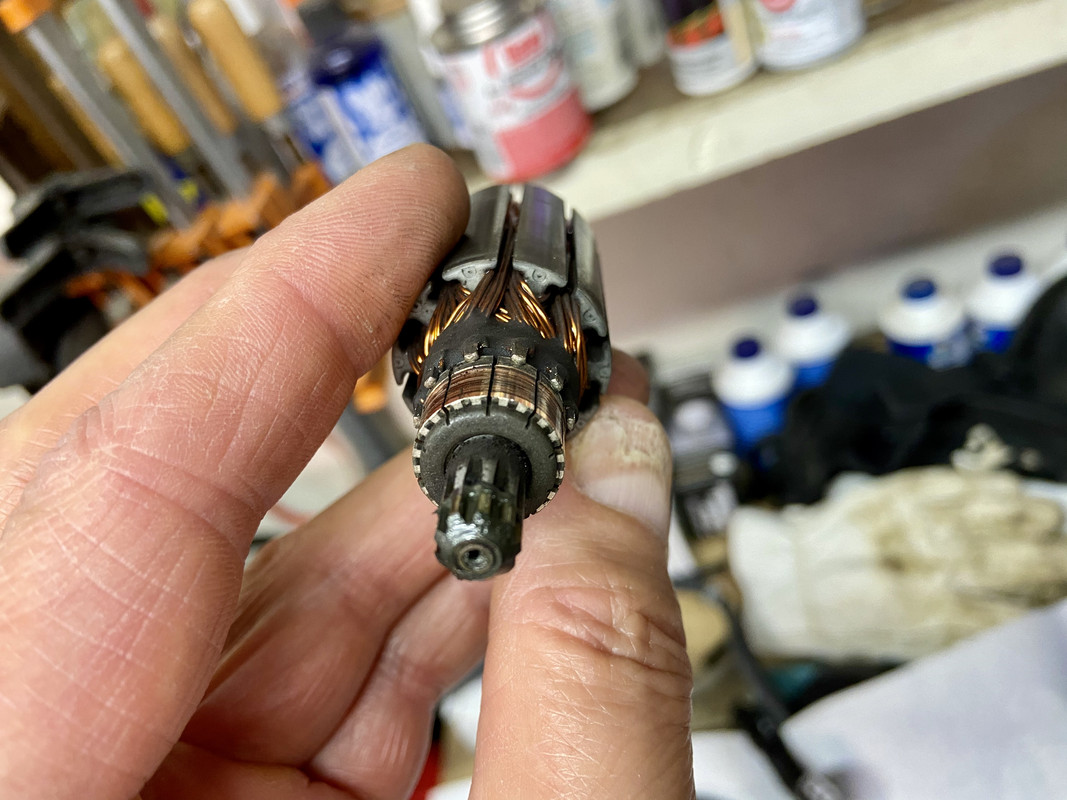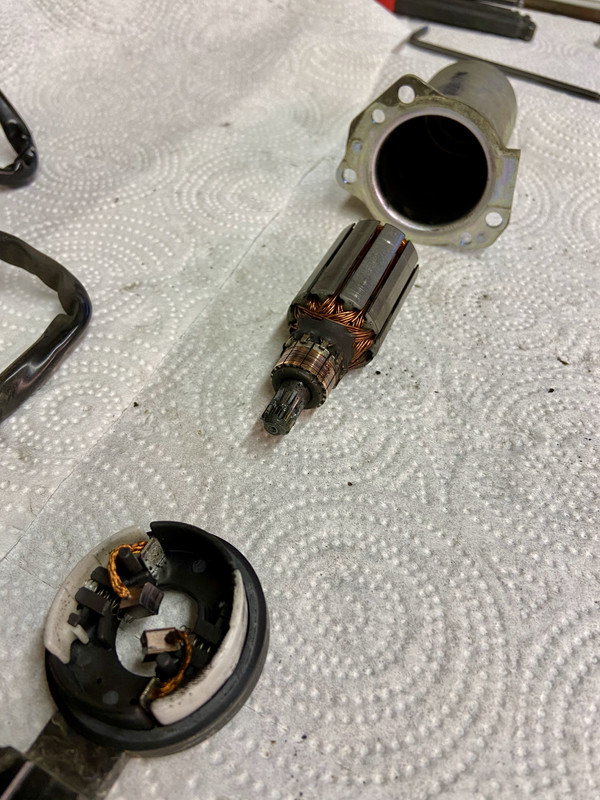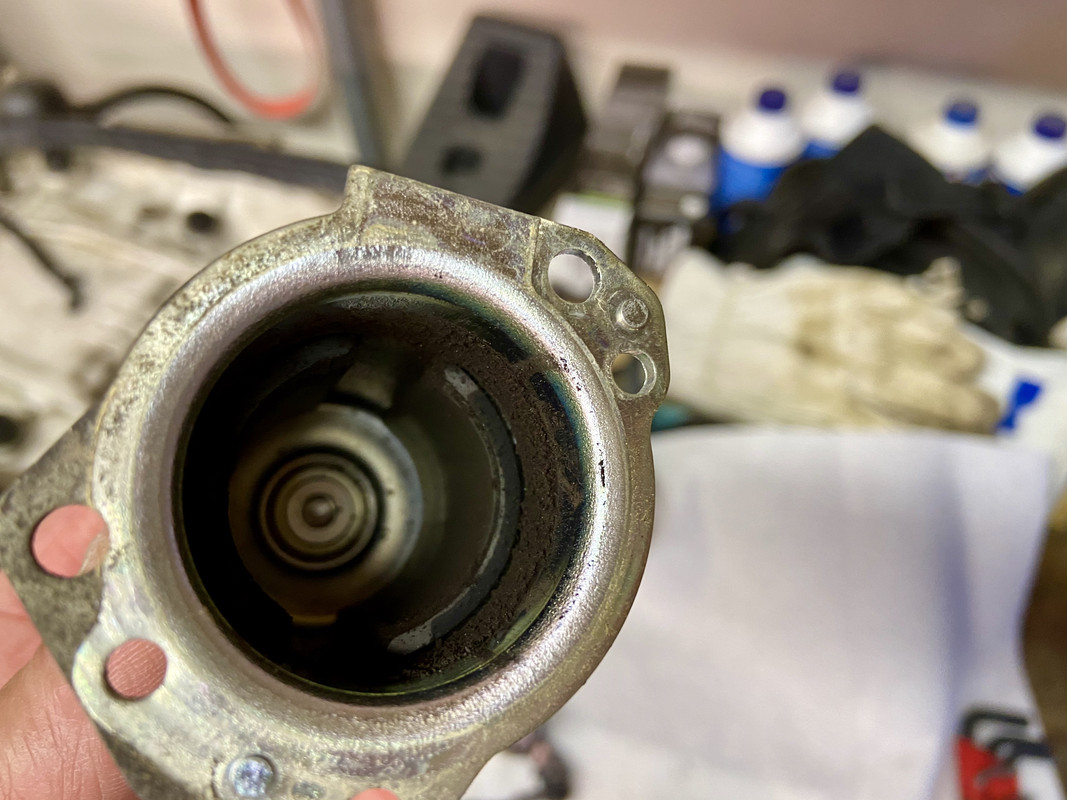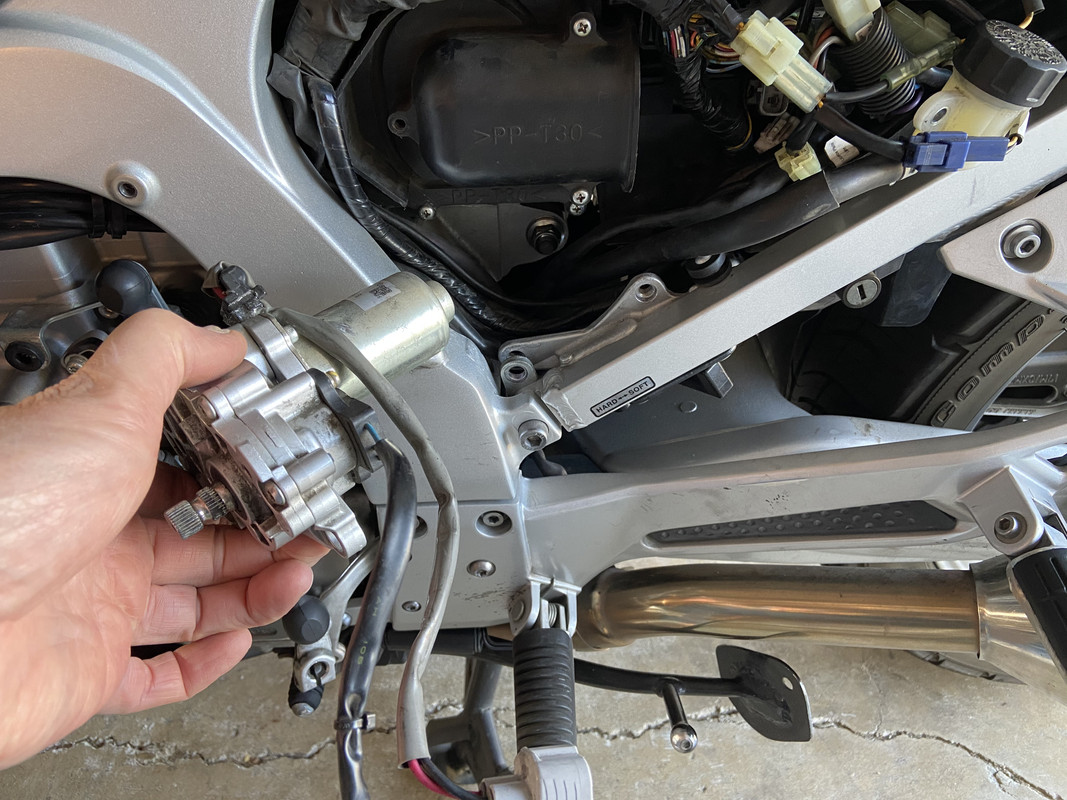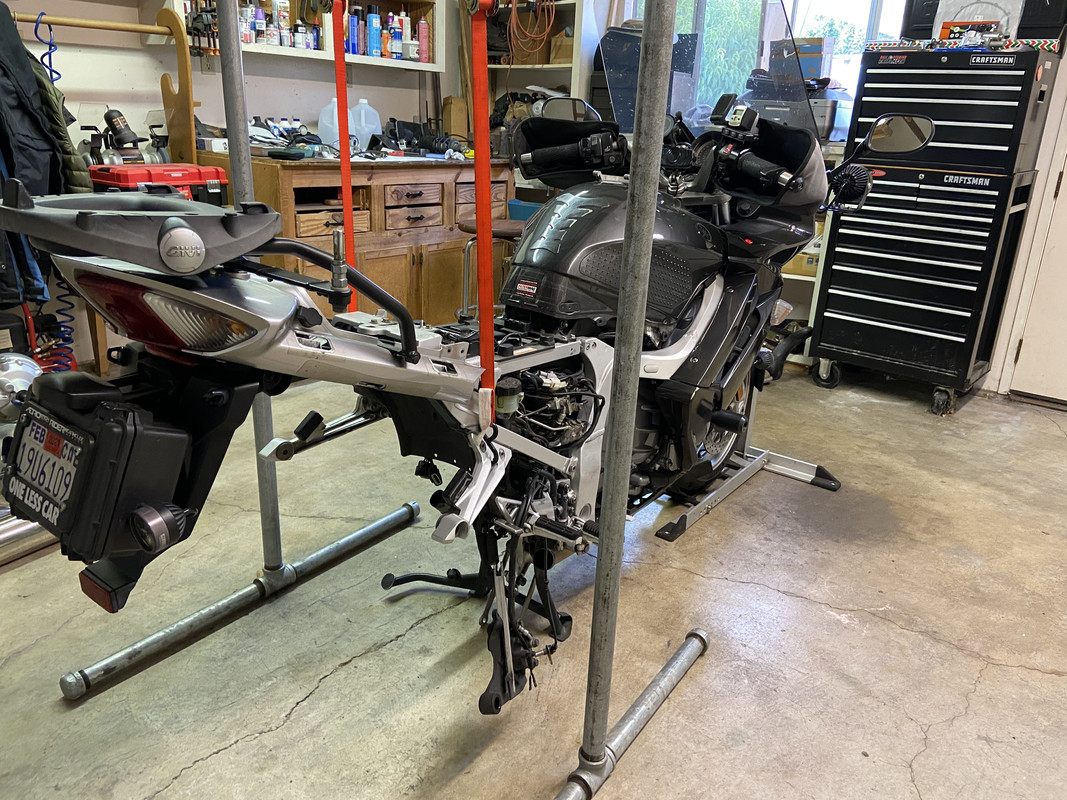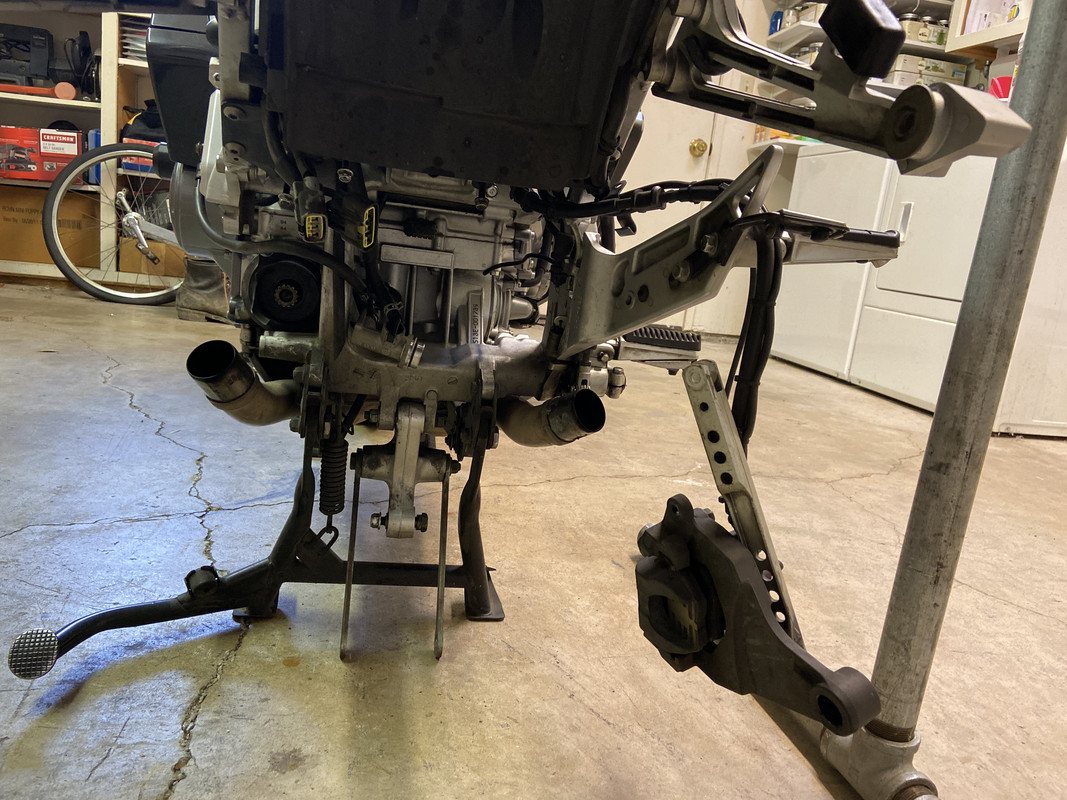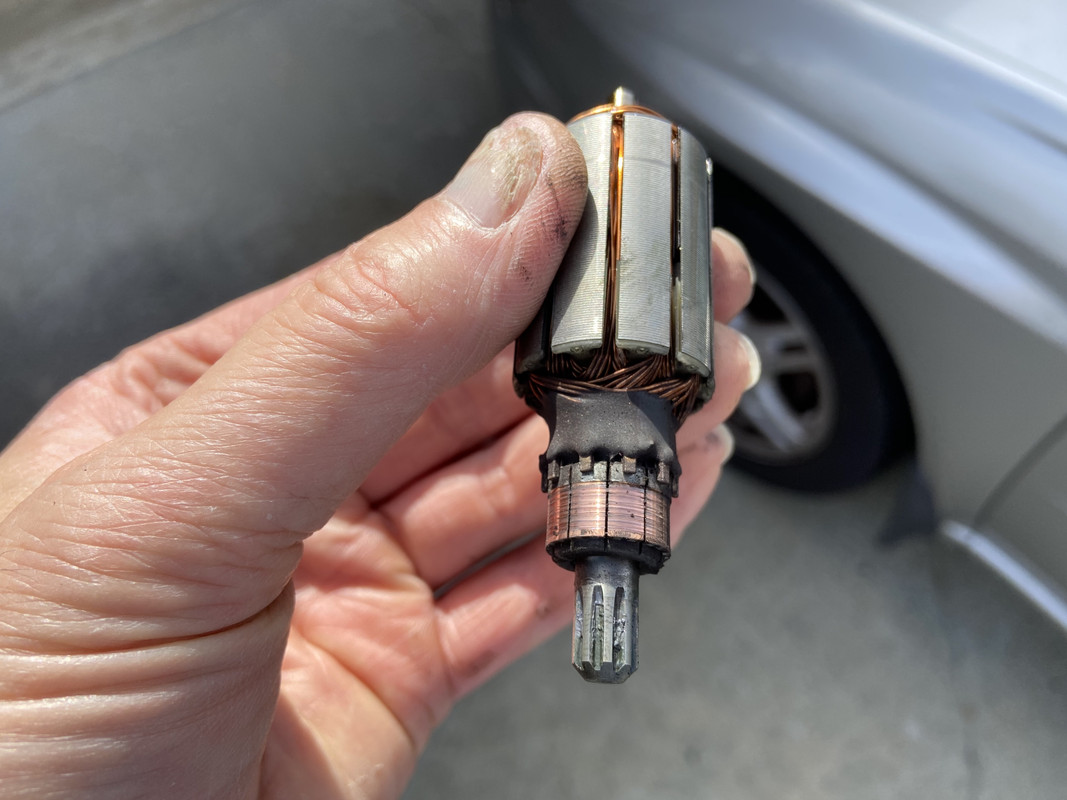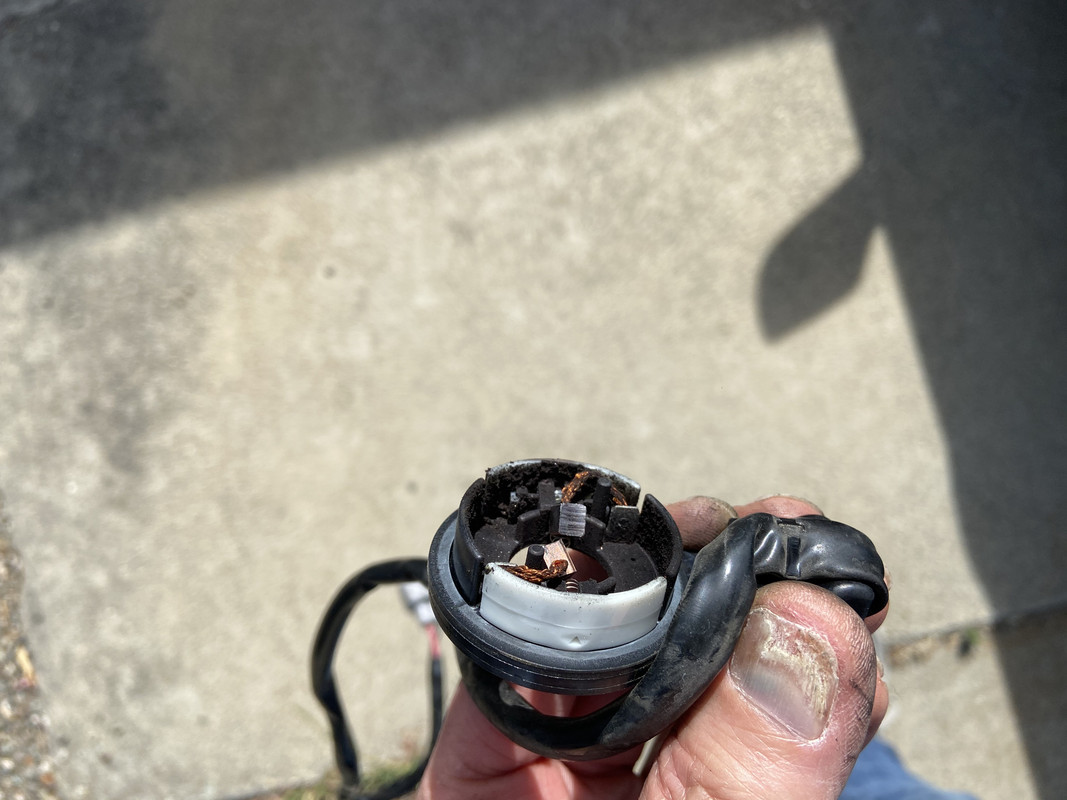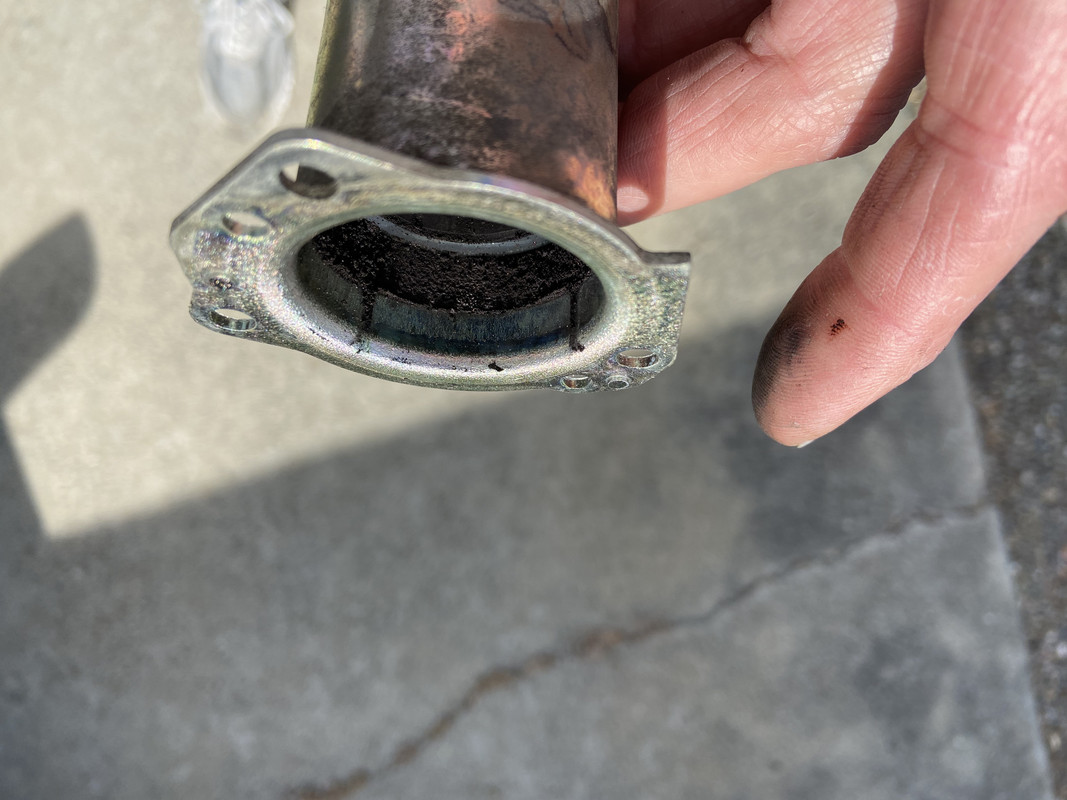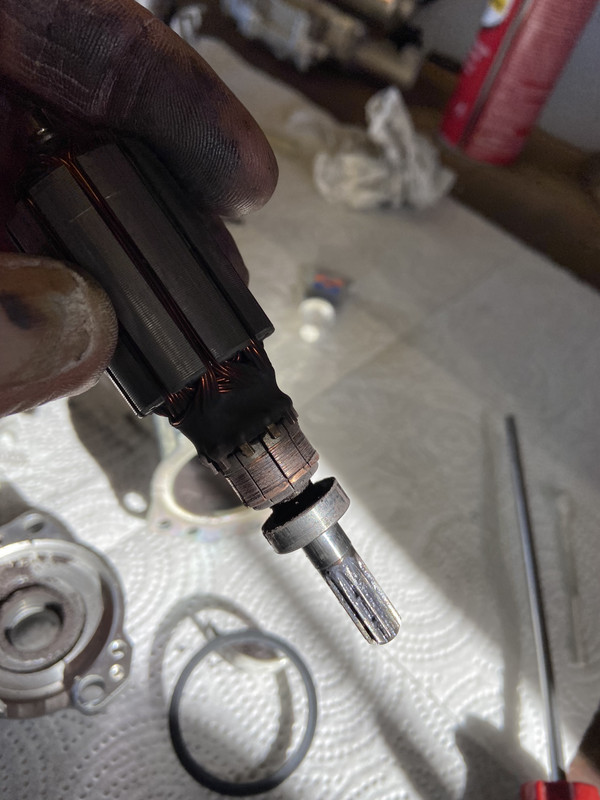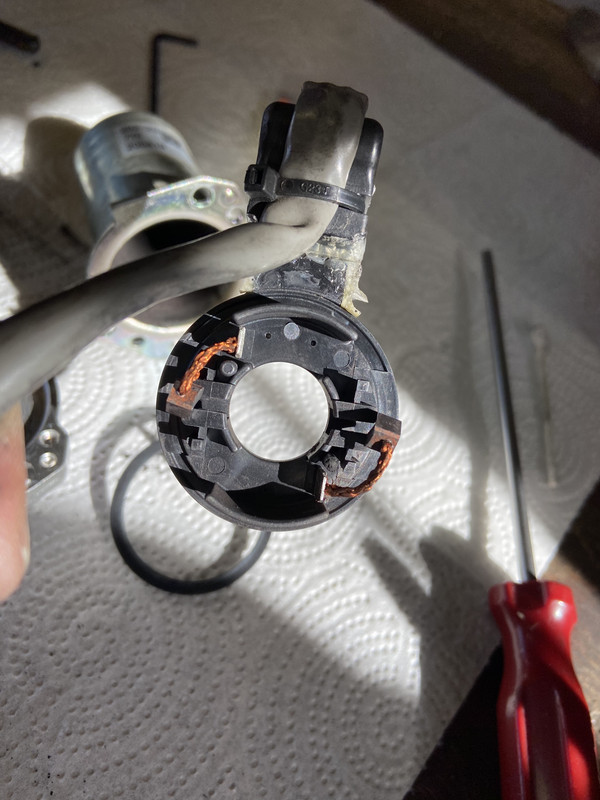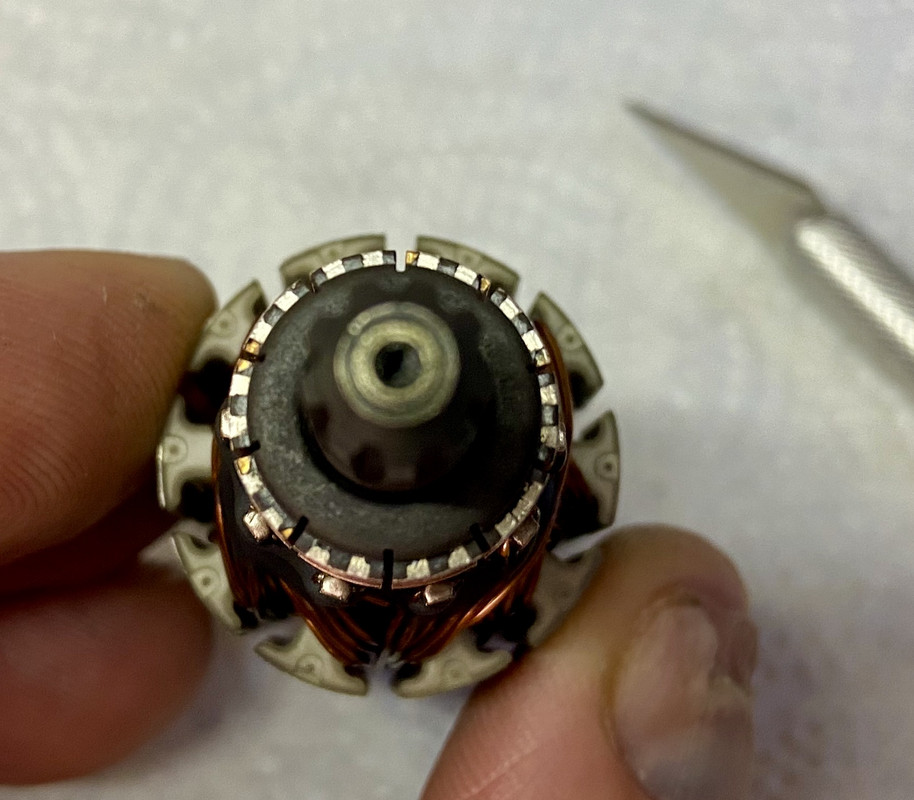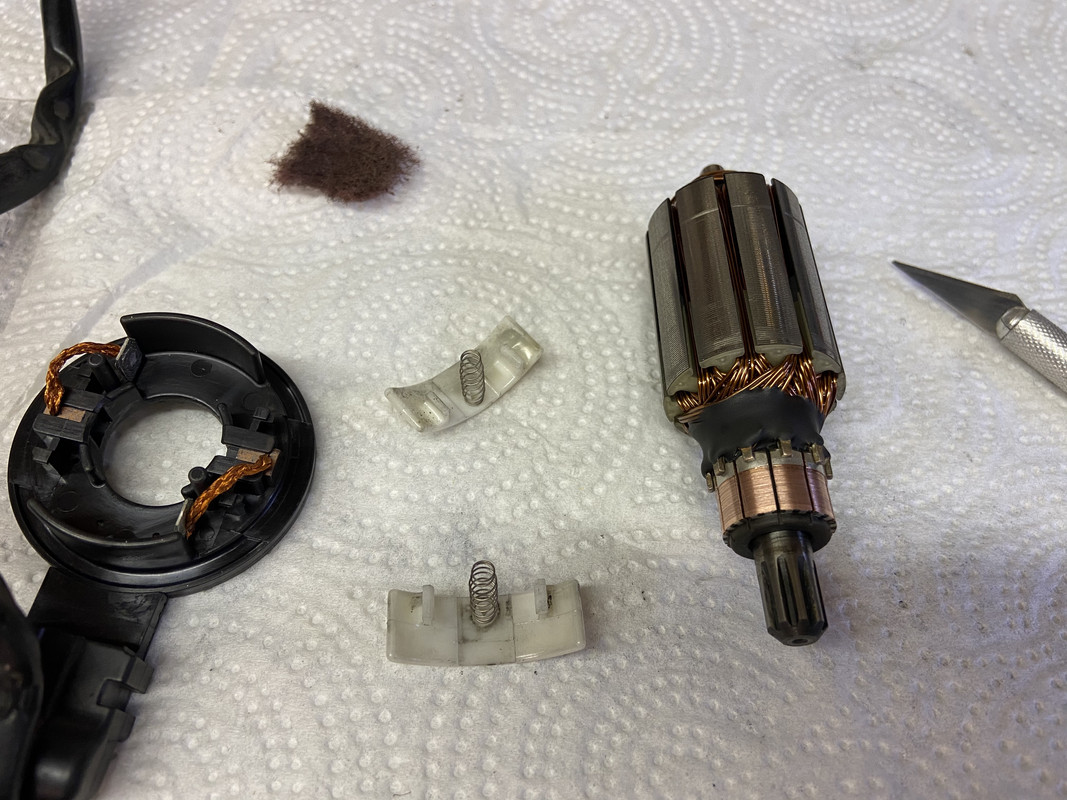Brodie
Darksider #16 - and Proud of it !
- Joined
- Sep 17, 2006
- Messages
- 1,453
- Reaction score
- 538
7/5/2020 Update:
I've since took the liberty to cross post this to that other sand box...
https://www.fjriders.com/forums/viewtopic.php?f=65&t=5300
I wanted to give the smart fellows over there an opportunity to contribute their wisdom to this topic too.
==================================
This is for the Yamaha Chip Controlled Shift (YCCS) model, aka the paddle shifter.
Some of us have been having an issue with these aging machines. They were only sold stateside between 2006 and 2009. Now that they are getting along in miles an issue has reared its ugly head. You could be driving for a while, having a nice ride, and all of the sudden the transmission fails to shift into the next gear. Or you could be slowing to a stoplight and the clutch fails to actuate and the bike lurches to a stop – engine stalled because it is still engaged to the rear wheel. You look down at the instrument cluster and see the dreaded yellow LED light lit with the fault code SH__37 showing. The bike will not shift into neutral, it will not start, and you are sitting at the front of a line of impatient drivers as you try to roll the bike out of their way – tough luck, you are still in gear and not rolling anywhere!
What in H3LL is going on, it was running fine just a moment ago.
What happened is that the YCCS Motor Control Unit (MCU) has detected a difference between line voltage and clutch actuator motor voltage, sufficient to throw the fault code SH__37. This MCU is constantly performing self checks as you drive. In this case you just shifted gears, or rolled to a stop, or tried to start the bike while in gear, and the clutch actuator was called upon to work the clutch. This clutch actuator lives just above the swing arm pivot toward the right side of center behind the engine. To service it requires you to drop the swing arm to gain access. The only service items available is a master cylinder rebuild kit, which also requires dropping the swing arm to get to it. Normally you never see it as it always performs its function when you hit the paddle shift. Hopefully you have been bleeding and/or changing the clutch fluid on a regular basis, but chances are it hasn't been done. The fluid sees engine heat, but not really hot brake caliper heat, so the DOT 3 fluid tends to last a bit longer.
Through the years I've been blessed with 3 different FJR AE (Advanced Edition) bikes. The first one I purchased new in November 2006, and put mile #1 on the clock. The nearly 4 years I owned that bike it shifted flawlessly - up to the point of impact at 88,744 miles. The second one was another '06 which had just under 9,000 miles on it when I got it. I'd say around my 3rd year of ownership it developed an occasional delayed shift from 2nd to 1st gear. Nothing dramatic, perhaps a quarter second delay from triggering the paddle, but noticeable. I ran that bike nearly 5 years, and toward the end the delay was becoming annoyingly regular. Bleeding the clutch fluid helped, but never eliminated the delay altogether.
I bought my current 2008 AE in February of 2015, with roughly 19,000 on the clock. To date it has traveled 99,149 miles. Early on it developed the delayed shift, just like my previous '06. This is the bike that threw the SH__37 fault code which gave me grief for the very first time. The first time it reared its ugly head was on my return trip from EOM at Maggie Valley NC, back in 2018. I ran my 50CC from Santa Cruiz to Jacksonville in under 48 hours, headed to Maggie Valley NC via Spring Hill FL, Tamed the Dragon (No big deal, we have plenty of roads that handily rival that here in the Golden State), and on my way home while passing through Gallup NM the SH__37 showed on the dash, and I was unable to shift gears. As I was heading west out of town with nearly a full tank, my quick calculations told me to slow down and head toward Flagstaff instead of Phoenix. I figured a U-Haul truck rental from Flagstaff would be a bit cheaper than from Gallup; and since I couldn't shift anyway, turning around and heading back to Gallup was out of the question. It was raining earlier, and the sky was clear ahead of me, and so long as I could keep running I figured that was my best bet. During that lonely ride on Interstate 40 out in the desert, being passed by way too many truckers as I was "conserving my gas" at 55mph. I had my friend, Victor (MajicMaker) on the SENA looking up what SH__37 entailed. I also talked to my new friend Gary (ghouse) some time along the way, I appreciated both of their company!
When I reached Flagstaff, I headed for the offramp with the Motel 6 just around the corner. Sure enough, just as I reached the end of the off ramp the traffic light turned red. Being in 5th gear and lugging the engine, I Performed a California Stop and managed to get it to the Motel 6 parking lot when it died and all forward motion ceased. To get the bike back into neutral, you need to grab hold of the shift linkage and shove it forward to down shift manually; repeat until neutral is reached and you can push the bike. Just for kicks, after getting it into neutral, while on center stand, I tried starting the bike, AND IT FIRED UP! The fault code had gone away while the key was in the off position, and the bike was alive and ready to go. A quick trip to the gas station across the street, and I was back on my way. I finished my trip several days later without issue.
The next time the fault code hit was about a year later on my commute to work. Light rain for about 10 minutes while getting through town, then another 8 minutes up on the freeway, then a couple more minutes on dry streets about a mile away from work, and it hit. I came to an abrupt stop, turned off the key, turned it back on and restarted the bike and got to work on time. Later that month I started servicing my electrical connectors. Back in summer of 2015, I had serviced all my connectors with ACF50, and it had washed away in several of the more exposed connectors. I am not impressed with that product for this application. My previous bikes I used Permatex Silicone Dielectric Tune Up Grease (the stuff you smear in your spark plug boots) to keep the contacts from reacting from the oxygen in the air we breathe. The ACF50 didn't stay put, where the grease will – I think I learned my lesson. I had got so far as the engine bay, and back to the rear of the bike, including all the various electronics and solenoids within the bowels of the beast. I also found what I thought was a smoking gun concerning the fault code. The shift actuator, the unit which actually rotates the shift drum thereby changing gears, had a crack on the plastic where the wires attach. It must have gotten wet from the rain and caused the fault code. Since it had dried out I got some epoxy and saturated the broken joint and waterproofed it once again. I did not get a chance to get to the connectors within the front body work on the bike by the time the SH__37 fault hit again.
This time I was on my way to Bill Mayer Saddles (BMS) in Ventura to have my 12 year old leather seat recovered. Back in 2007 Gregory had arranged a group buy, and this seat had graced all 3 of my FJRs. By my count it has nearly 200,000 miles on it by now, and the leather just started showing the fabric underneath in a deep crevasse. It was a Friday morning ride in this time, and I took a night off of work to make the trip. I had gone as far as Paso Robles, and needing to refuel, I got off the freeway to look for gas. Fault SH__37 hit before I could get to the gas station, and stopped me cold. No rain on this trip, however, the past 20 miles put me through fog and a lot of moisture. I was in Paso Robles for over five hours, and ended up calling BMS to let him know I couldn't make it. The goal was to get home. The fault was somewhat stubbornly intermittent, it had hit hard this time, but I was able to limp it to a gas station to fill the tank. Daylight came, I figured if it was moisture related perhaps it would dry out enough to let me ride home. after many attempts, and limping it through town, I finally got it to the northbound freeway onramp when it stopped me again. Another half hour later I was able to fire the bike, get it rolling onto the onramp, and somehow it let me get into 5th gear. I didn't stop until I reached my driveway here in Milpitas with a near empty gas tank, and the bloody SH__37 shining on my dash!
That weekend the front body work came off, including the headlight nacelle and the rest of the electrical connectors were serviced, including all the custom harnesses I had grafted in with all my farkles. The delayed shift seemed to be related to air in the hydraulic line, and would be much better after bleeding; but the improvement didn't last long. Somehow air was getting back into the hydraulics shortly after bleeding the system. So bit the bullet and ordered the master cylinder rebuild kit, the replacement slave cylinder, and new hydraulic hose between them for the clutch system, and 2 weeks later had them installed. New parts all around seemed to improve that issue, but it still happened occasionally. I also purchased a used shift actuator off of e-bay which had an intact plastic part where the wires attach. Since the repair seemed intact, the electric motor stayed in service.
Last Monday (June 8), on my way to work (graveyard shift), SH__37 stopped me again. This time about a mile away from my house. It was about 9:00 at night, and came up to a red light, between 2 cars when the bike stalled at the crosswalk with the yellow LED and SH__37 staring at me from the dash – how embarrassing! Here I am on this big powerful bike, between a couple of drivers on my regular commute route, and I have to wave them on around me. I was able to reach down and hand shift into neutral, and straddle-walk my bike to the curb and up theskateboard wheelchair ramp onto the sidewalk. About 40 minutes later I was able to limp it back home and take the truck to work, about 75 minutes late. And here it sits in my garage, on the battery tender.
Long read, I know, but this is the history behind my experience with this Advanced Edition model through the years. As these bikes age we learn more and more about them. This model is not that complex compared to the latest bikes since 2013, as there is a lot more electronics on the later models. Before you throw stones at the AE, know this, your bike is getting old too, and you too will have the opportunity to become intimately involved with its upkeep should you decide to hold on to it.
Moving forward, this is what I am doing ...
Since this latest occurrence happened with no moisture whatsoever in the forecast, I will rule that out. Since EVERY connector on the bike has been serviced with the tune up grease, and the wire harness all look intact, I will rule out the wiring. That leaves the components... The MCU, the shift actuator, and the clutch actuator. My hard copy service manual says the following for SH__37...
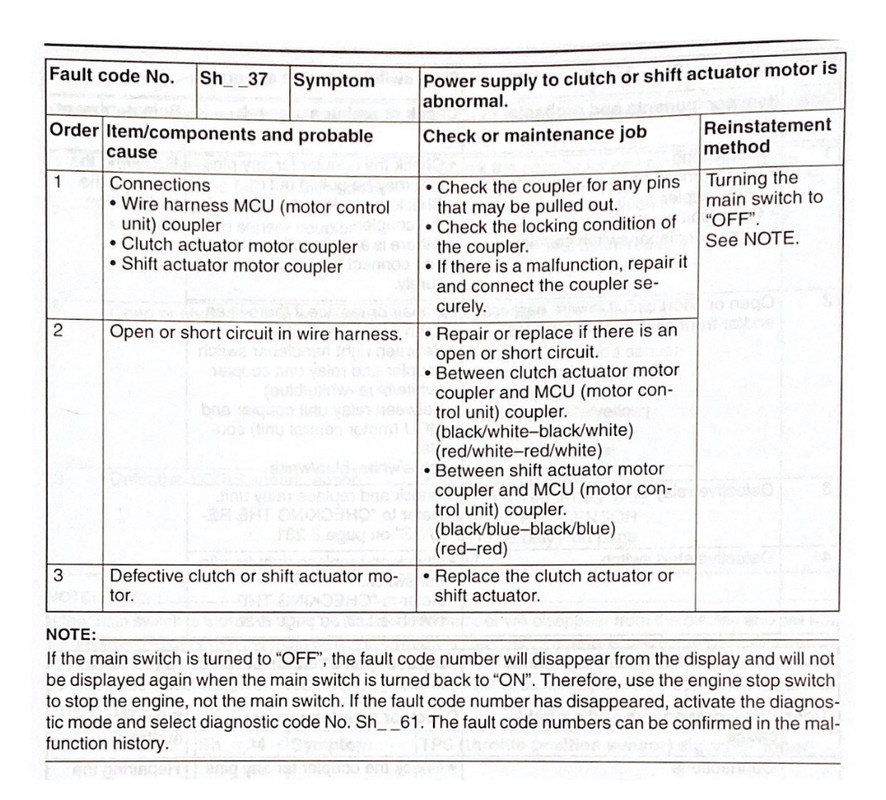
Since I checked the connectors, and I checked the wire harnesses, and ruled them both out, that leaves me with the third probable cause – Defective clutch or shift actuator motor.
Since the SH__37 fault happened 3 times out of 4 when the bike came to a stop, and the first time when riding through late evening rush hour traffic in Gallup NM, most likely when shifted from 4th to 5th, I will rule out the shift actuator. That leaves the clutch actuator suspect. I could rule in the MCU, but it seems to be doing just what it is programmed to do. If there were a problem with the MCU, I would think it would be either good or bad, but not intermittently faulty in the way the above history shows.
Therefore, this time around I will address the clutch actuator, which is what my next post will delve into.
Brodie

I've since took the liberty to cross post this to that other sand box...
https://www.fjriders.com/forums/viewtopic.php?f=65&t=5300
I wanted to give the smart fellows over there an opportunity to contribute their wisdom to this topic too.
==================================
This is for the Yamaha Chip Controlled Shift (YCCS) model, aka the paddle shifter.
Some of us have been having an issue with these aging machines. They were only sold stateside between 2006 and 2009. Now that they are getting along in miles an issue has reared its ugly head. You could be driving for a while, having a nice ride, and all of the sudden the transmission fails to shift into the next gear. Or you could be slowing to a stoplight and the clutch fails to actuate and the bike lurches to a stop – engine stalled because it is still engaged to the rear wheel. You look down at the instrument cluster and see the dreaded yellow LED light lit with the fault code SH__37 showing. The bike will not shift into neutral, it will not start, and you are sitting at the front of a line of impatient drivers as you try to roll the bike out of their way – tough luck, you are still in gear and not rolling anywhere!
What in H3LL is going on, it was running fine just a moment ago.
What happened is that the YCCS Motor Control Unit (MCU) has detected a difference between line voltage and clutch actuator motor voltage, sufficient to throw the fault code SH__37. This MCU is constantly performing self checks as you drive. In this case you just shifted gears, or rolled to a stop, or tried to start the bike while in gear, and the clutch actuator was called upon to work the clutch. This clutch actuator lives just above the swing arm pivot toward the right side of center behind the engine. To service it requires you to drop the swing arm to gain access. The only service items available is a master cylinder rebuild kit, which also requires dropping the swing arm to get to it. Normally you never see it as it always performs its function when you hit the paddle shift. Hopefully you have been bleeding and/or changing the clutch fluid on a regular basis, but chances are it hasn't been done. The fluid sees engine heat, but not really hot brake caliper heat, so the DOT 3 fluid tends to last a bit longer.
Through the years I've been blessed with 3 different FJR AE (Advanced Edition) bikes. The first one I purchased new in November 2006, and put mile #1 on the clock. The nearly 4 years I owned that bike it shifted flawlessly - up to the point of impact at 88,744 miles. The second one was another '06 which had just under 9,000 miles on it when I got it. I'd say around my 3rd year of ownership it developed an occasional delayed shift from 2nd to 1st gear. Nothing dramatic, perhaps a quarter second delay from triggering the paddle, but noticeable. I ran that bike nearly 5 years, and toward the end the delay was becoming annoyingly regular. Bleeding the clutch fluid helped, but never eliminated the delay altogether.
I bought my current 2008 AE in February of 2015, with roughly 19,000 on the clock. To date it has traveled 99,149 miles. Early on it developed the delayed shift, just like my previous '06. This is the bike that threw the SH__37 fault code which gave me grief for the very first time. The first time it reared its ugly head was on my return trip from EOM at Maggie Valley NC, back in 2018. I ran my 50CC from Santa Cruiz to Jacksonville in under 48 hours, headed to Maggie Valley NC via Spring Hill FL, Tamed the Dragon (No big deal, we have plenty of roads that handily rival that here in the Golden State), and on my way home while passing through Gallup NM the SH__37 showed on the dash, and I was unable to shift gears. As I was heading west out of town with nearly a full tank, my quick calculations told me to slow down and head toward Flagstaff instead of Phoenix. I figured a U-Haul truck rental from Flagstaff would be a bit cheaper than from Gallup; and since I couldn't shift anyway, turning around and heading back to Gallup was out of the question. It was raining earlier, and the sky was clear ahead of me, and so long as I could keep running I figured that was my best bet. During that lonely ride on Interstate 40 out in the desert, being passed by way too many truckers as I was "conserving my gas" at 55mph. I had my friend, Victor (MajicMaker) on the SENA looking up what SH__37 entailed. I also talked to my new friend Gary (ghouse) some time along the way, I appreciated both of their company!
When I reached Flagstaff, I headed for the offramp with the Motel 6 just around the corner. Sure enough, just as I reached the end of the off ramp the traffic light turned red. Being in 5th gear and lugging the engine, I Performed a California Stop and managed to get it to the Motel 6 parking lot when it died and all forward motion ceased. To get the bike back into neutral, you need to grab hold of the shift linkage and shove it forward to down shift manually; repeat until neutral is reached and you can push the bike. Just for kicks, after getting it into neutral, while on center stand, I tried starting the bike, AND IT FIRED UP! The fault code had gone away while the key was in the off position, and the bike was alive and ready to go. A quick trip to the gas station across the street, and I was back on my way. I finished my trip several days later without issue.
The next time the fault code hit was about a year later on my commute to work. Light rain for about 10 minutes while getting through town, then another 8 minutes up on the freeway, then a couple more minutes on dry streets about a mile away from work, and it hit. I came to an abrupt stop, turned off the key, turned it back on and restarted the bike and got to work on time. Later that month I started servicing my electrical connectors. Back in summer of 2015, I had serviced all my connectors with ACF50, and it had washed away in several of the more exposed connectors. I am not impressed with that product for this application. My previous bikes I used Permatex Silicone Dielectric Tune Up Grease (the stuff you smear in your spark plug boots) to keep the contacts from reacting from the oxygen in the air we breathe. The ACF50 didn't stay put, where the grease will – I think I learned my lesson. I had got so far as the engine bay, and back to the rear of the bike, including all the various electronics and solenoids within the bowels of the beast. I also found what I thought was a smoking gun concerning the fault code. The shift actuator, the unit which actually rotates the shift drum thereby changing gears, had a crack on the plastic where the wires attach. It must have gotten wet from the rain and caused the fault code. Since it had dried out I got some epoxy and saturated the broken joint and waterproofed it once again. I did not get a chance to get to the connectors within the front body work on the bike by the time the SH__37 fault hit again.
This time I was on my way to Bill Mayer Saddles (BMS) in Ventura to have my 12 year old leather seat recovered. Back in 2007 Gregory had arranged a group buy, and this seat had graced all 3 of my FJRs. By my count it has nearly 200,000 miles on it by now, and the leather just started showing the fabric underneath in a deep crevasse. It was a Friday morning ride in this time, and I took a night off of work to make the trip. I had gone as far as Paso Robles, and needing to refuel, I got off the freeway to look for gas. Fault SH__37 hit before I could get to the gas station, and stopped me cold. No rain on this trip, however, the past 20 miles put me through fog and a lot of moisture. I was in Paso Robles for over five hours, and ended up calling BMS to let him know I couldn't make it. The goal was to get home. The fault was somewhat stubbornly intermittent, it had hit hard this time, but I was able to limp it to a gas station to fill the tank. Daylight came, I figured if it was moisture related perhaps it would dry out enough to let me ride home. after many attempts, and limping it through town, I finally got it to the northbound freeway onramp when it stopped me again. Another half hour later I was able to fire the bike, get it rolling onto the onramp, and somehow it let me get into 5th gear. I didn't stop until I reached my driveway here in Milpitas with a near empty gas tank, and the bloody SH__37 shining on my dash!
That weekend the front body work came off, including the headlight nacelle and the rest of the electrical connectors were serviced, including all the custom harnesses I had grafted in with all my farkles. The delayed shift seemed to be related to air in the hydraulic line, and would be much better after bleeding; but the improvement didn't last long. Somehow air was getting back into the hydraulics shortly after bleeding the system. So bit the bullet and ordered the master cylinder rebuild kit, the replacement slave cylinder, and new hydraulic hose between them for the clutch system, and 2 weeks later had them installed. New parts all around seemed to improve that issue, but it still happened occasionally. I also purchased a used shift actuator off of e-bay which had an intact plastic part where the wires attach. Since the repair seemed intact, the electric motor stayed in service.
Last Monday (June 8), on my way to work (graveyard shift), SH__37 stopped me again. This time about a mile away from my house. It was about 9:00 at night, and came up to a red light, between 2 cars when the bike stalled at the crosswalk with the yellow LED and SH__37 staring at me from the dash – how embarrassing! Here I am on this big powerful bike, between a couple of drivers on my regular commute route, and I have to wave them on around me. I was able to reach down and hand shift into neutral, and straddle-walk my bike to the curb and up the
Long read, I know, but this is the history behind my experience with this Advanced Edition model through the years. As these bikes age we learn more and more about them. This model is not that complex compared to the latest bikes since 2013, as there is a lot more electronics on the later models. Before you throw stones at the AE, know this, your bike is getting old too, and you too will have the opportunity to become intimately involved with its upkeep should you decide to hold on to it.
Moving forward, this is what I am doing ...
Since this latest occurrence happened with no moisture whatsoever in the forecast, I will rule that out. Since EVERY connector on the bike has been serviced with the tune up grease, and the wire harness all look intact, I will rule out the wiring. That leaves the components... The MCU, the shift actuator, and the clutch actuator. My hard copy service manual says the following for SH__37...

Since I checked the connectors, and I checked the wire harnesses, and ruled them both out, that leaves me with the third probable cause – Defective clutch or shift actuator motor.
Since the SH__37 fault happened 3 times out of 4 when the bike came to a stop, and the first time when riding through late evening rush hour traffic in Gallup NM, most likely when shifted from 4th to 5th, I will rule out the shift actuator. That leaves the clutch actuator suspect. I could rule in the MCU, but it seems to be doing just what it is programmed to do. If there were a problem with the MCU, I would think it would be either good or bad, but not intermittently faulty in the way the above history shows.
Therefore, this time around I will address the clutch actuator, which is what my next post will delve into.
Brodie




